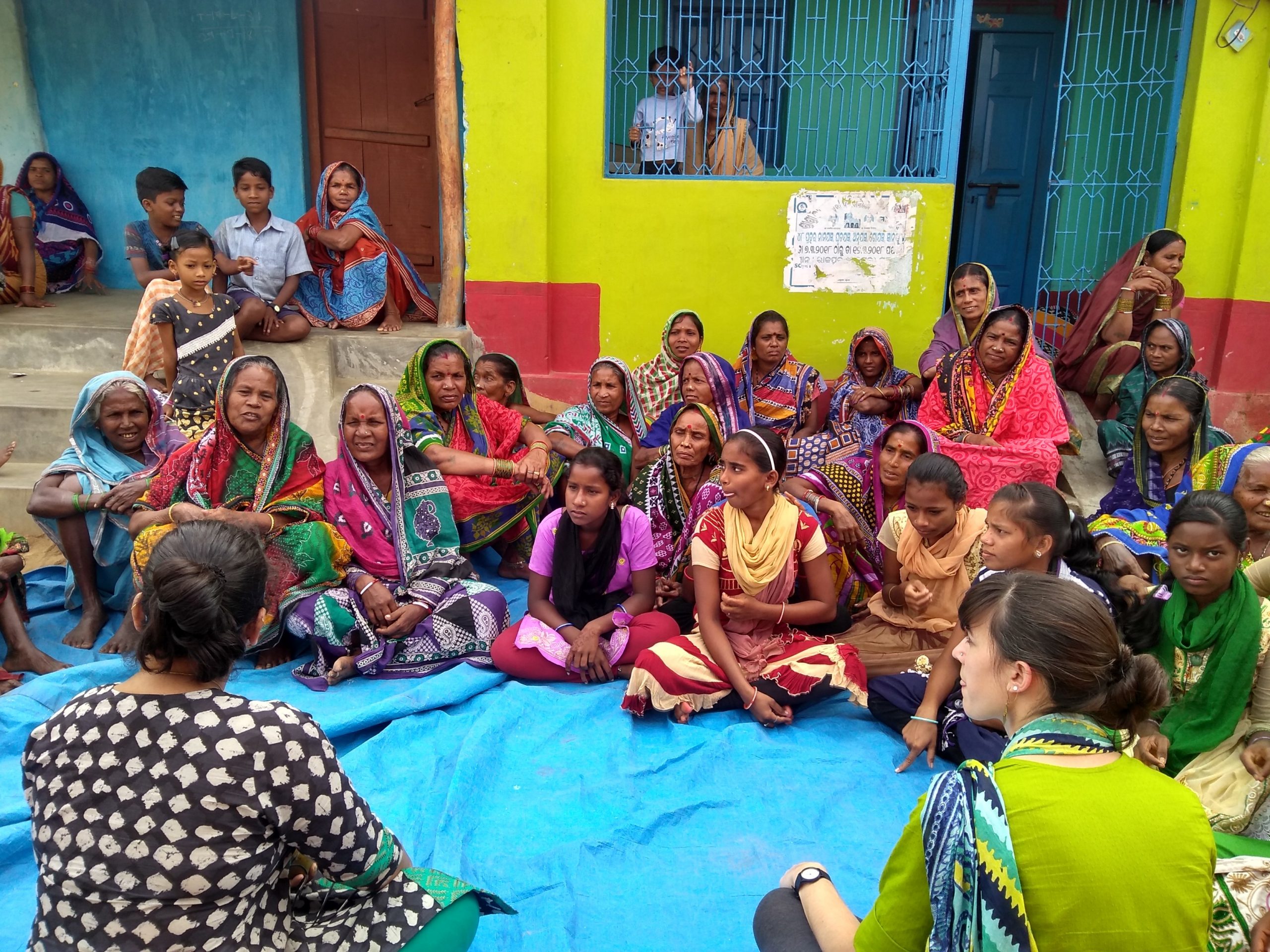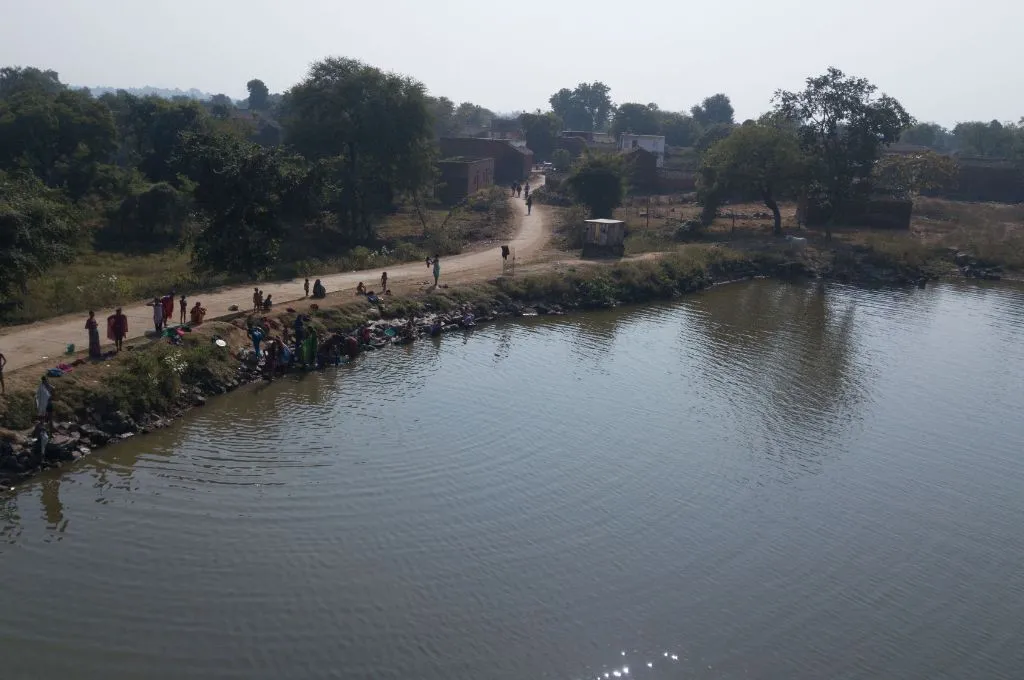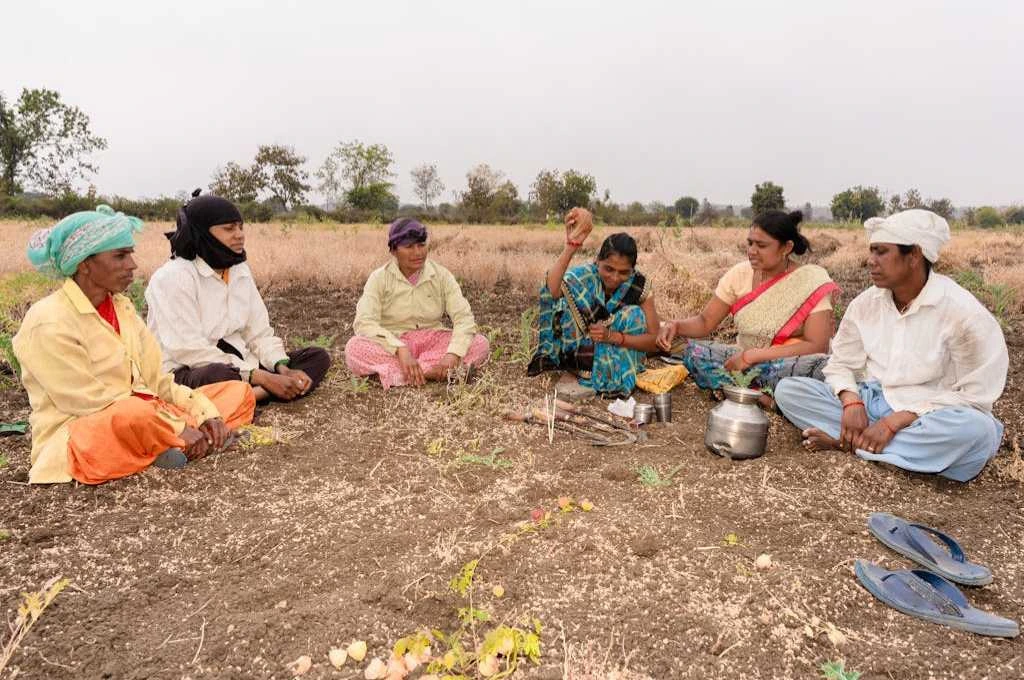In November 2018, three teams working on sanitation in India came together for a learning exchange funded by the Bill & Melinda Gates Foundation. Members from Gram Vikas (GV), Emory University and the International Initiative for Impact Evaluation (3ie) visited villages in the Indian state of Odisha where both Emory and GV are implementing sanitation programmes alongside the Indian government’s Swachh Bharat Mission (SBM).
SBM’s goal is to achieve an open defecation-free India by October 2019. This is a daunting task, as studies show that despite having access to a latrine, rural Indian households still prefer defecating in the open for a variety of reasons, such as the fear of having to empty the latrine pit and lack of water at, or near, the latrine. Odisha, in particular, is considered one of the slow performers under SBM. According to the National Family Health Survey (2015-16), only 35 percent of the households have access to an improved or unimproved latrine.
Emory and GV have taken very different approaches to promote latrine use. Leveraging our different organisational perspectives (evaluation funder, practitioner, and researcher), our goal for the exchange was to learn about how these sanitation behaviour change programmes have worked on the ground. We were looking for answers to the questions of what works and doesn’t, to promote latrine use in rural Odisha, and how the lessons learned could inform future sanitation policy.
The long game vs short game approach
[quote]GV uses water as an incentive to encourage community commitment to build this infrastructure.[/quote]GV’s MANTRA programme focuses on community-led construction of a twin-pit, pour flush latrine with attached bathroom for all households in a village. GV uses water as an incentive to encourage community commitment to build this infrastructure. It builds a community water tank that supplies 24-hour piped water to the kitchen, bathroom, and latrine of every household. However, the water is only ‘turned on’ if each household contributes to a community corpus fund and builds sanitation infrastructure.
While a significant proportion of the construction costs are covered through government subsidies, community members are expected to contribute labour and materials. GV facilitates the setup of a sanitation committee, which has equal gender and caste representation. Given the scale and effort required, this programme takes an average of three years to implement; it’s a long game approach.
For our learning exchange, we visited three MANTRA villages—Samyapalli (programme completed in 1992), Kamapalli (currently in latrine construction phase), and Bahalpur (completed in 2004).

Community meetings were held for members to decide how to make their village clean, healthy, and beautiful.
Emory’s Sundara Grama (Beautiful Village) programme, on the other hand, is a low-cost, scalable intervention—a short game approach. It was designed for an impact evaluation that is part of 3ie’s Promoting Latrine Use in Rural India Programme and was rolled out within six months. It included the following community activities:
- A traditional performance or palla, that uses songs and skits to convey health and non-health benefits to latrine use
- A transect walk, where participants sprinkle coloured powder on faeces to make open defecation salient;
- Community meetings where members agree upon action steps for achieving a ‘clean, healthy, beautiful village’
- A community map painting that shows each household’s latrine use status
Additionally, the programme includes mothers’ meetings to provide caregivers action knowledge about the safe disposal of children’s faeces, household reminder visits, congratulatory banners to ‘positive deviant’ households and repairs to non-functional latrines or latrines that lack privacy (i.e. no door). For our learning exchange, we spent a day in Muninda village and spoke with different households about their experience with the programme.
Related article: Building long-term sanitation solutions
What did we learn?
Our conversations with GV staff and community members in three villages highlighted the importance of sustained water supply as an incentive for community members to not just construct latrines and bathrooms, but also use them. Further, by virtue of its design, the twin-pit latrine addresses concerns related to pit filling.
In Samyapalli, all households constructed latrines back in 1992. Just a few kilometres away, Kamapalli has only just started engaging with the programme as it took a long time to build community commitment. Why the stark contrast? A strong community leader helped steer the programme to success in Samyapalli and consensus was easier to achieve since community members belonged to only a few caste groups. Kamapalli, however, has several castes, which makes consensus more challenging, and the lack of a strong leader has not helped.
Evidence suggests that community contribution in terms of time and resources influences ownership.
However, once a village establishes commitment to the programme, GV offers its facilitation support over three to five years to foster community ownership and build leadership structures—another important factor that drives latrine use. Existing evidence suggests that community contribution in terms of time and resources influences ownership. This is apparent in the GV villages where the community sanitation committees manage the building of sanitation infrastructure, and also define the process for maintenance and repairs.
In Muninda village, the households that we interacted with said that the palla performance drew a big crowd but the same was not true for community meetings, the transect walk, or mothers’ meetings. The reason? Daughters-in-law are not typically allowed to participate in public meetings. Mothers or mothers-in-law of young women reported attending the mothers’ meeting on their behalf. For us, it was an important insight into how social and cultural norms may influence the implementation of sanitation programming.
When members of a household in Muninda were asked about whether they used a latrine, they said yes. They went on to then describe how they procured water for the latrine. But, the latrine itself did not indicate any signs of use. This supports what we have learned from sanitation literature—latrine use reporting is subject to social-desirability bias. The visit to the household in Muninda highlighted how crucial rigorous methods are for accurate and reliable latrine use measurement.
What are the implications for SBM?
The sanitation literature in India suggests that historically marginalised groups are more likely to defecate in the open as they often lack resources to construct toilets. SBM offers an incentive of Rs 12,000 to build a basic toilet and the funds are made available only after toilet construction has been completed and verified. As people often want to construct a better quality toilet, or build a bathroom in addition to the toilet, the increased costs may put construction out of reach for vulnerable groups.
Related article: Moving beyond just building toilets
GV’s programme is notable because it addresses both these issues. First, their model includes a toilet, bathroom and running water connections. Second, GV has a non-negotiable focus on social inclusion. While richer households might construct their toilet and bathroom quickly, it is not until the entire village completes construction that that water supply is started. This implies that an entire village must not only collectively agree to improve sanitation facilities but also identify ways to assist vulnerable households.
While this approach is not without limitations (i.e. the programme can take up to three years to complete), it is a unique approach that ensures no household is left behind. Ensuring equal representation of castes and genders on the sanitation committee also ensures different perspectives inform decision-making in an inclusive way.
Although they have different approaches, both the GV and Emory interventions highlight the importance of mobilisation and information, education, and communication activities for increasing community participation. Folk theatre like palla can be a low-cost method for conveying sanitation-related messages through stories. The GV approach on the other hand shows the benefits of intensive community mobilisation for sustaining community participation and ownership in the long term.
For us, this learning exchange visit prompted us to make comparisons and find patterns in our field observations. Whether it is a short-game or a long game approach, understanding field realities, context-related complexities, and social norms, can make all the difference to designing effective sanitation programmes that can improve lives.
Alok Ranjan, Apurva Ghugey, Liby T Johnson and Sangita Patra (Gram Vikas); Gloria D Sclar and Parimita Routray (Emory University); and Neeta Goel and Radhika Menon (3ie) contributed to this article.
This article was originally published on 3ie. You can read it here.







